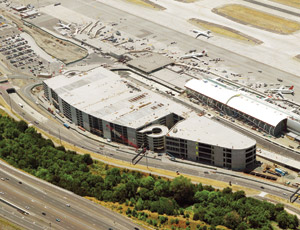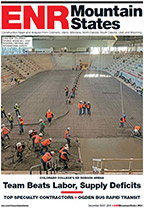Specialty contractors are as different as their niches, but most agree the market has to get a lot better before they’re healthy again.


“One might argue that this is one of the steepest [construction] declines in my generation,” says Tony Guzzi, CEO of Norwalk, Conn.-based EMCOR Group, Inc.
Guzzi, whose global company specializes in mechanical and electrical construction, energy infrastructure and facilities services, says that with unemployment for skilled trade labor between 25% to 35% nationally, specialty contractors have to be creative to survive.
“We spend a lot of time thinking about innovation and solutions for our customers, whether it is an [industrial] plant, a university, a convention center or you name it,” says Guzzi, whose company saw an estimated 2009 base revenues of about $5.5 billion.
On a local level, Santo Pernicano, current president of the Sacramento-based American Subcontractors Association of California, says the state’s construction unemployment of between 20% and 25% feels more like a depression than a recession.
“There is too much competition for the work that is out there,” says Pernicano, who is also the president of Lakeside, Calif.-based Area-West Fence Co. “Bid opportunities are there, but because of competition, prices are extremely low and people are starting to get a bit desperate.”
Guenter Meiburg, former ASAC president (2006) and president and owner of Santa Rosa-based Dynamic Pre-Cast Co. Inc., says if firms do get work, “there is so much competition you have to reduce your margin significantly and that contributes to the negative picture.
“As a specialty contractor there is generally a limited field of bidders, but today some might go a little farther for a project. For example, an out-of-state contractor that’s in the same business might bid where in other times he wouldn’t.”
Ziggy Muhlhauser, co-owner and vice president of Bloomington, Calif.-based Muhlhauser Steel Inc., calls the pricing “stupid low and not sustainable for some firms that are getting the jobs. And I’m surprised more specialty subs have not gone under because of this.”
Muhlhauser’s company deals in heavy structural steel work, including remodeling, pharmaceutical and expansion projects.
He says the philosophy of some subs is to just “get the work to keep the cash flow going,” but the problem is that a lot of the projects that low bidders are taking are public works projects, where “subs are lucky to get paid within 90 days on their progress payments, and then they have a 10% retention taken out. We are finding jobs going for less than our cost, so sooner or later it’s going to collapse for the guys taking the jobs too cheap.”

PERNICANO

GUZZI
Muhlhauser says he understands some general contractors are in a bind to work with reckless low-bidders in order to get the job themselves.
“But if they are smart they won’t be taking low bids from the same specialty subs for a lot of their projects,” he says. “I think they need to spread the work around a little bit to protect themselves.”
While “irrational” behavior may be true for some contractors, most have remained conservative during the downturn, Guzzi says.
“I think if you look at what has happened in the last 18 months, I think we have all been fairly tough-minded about the removal of cost, and as a result we’ve lowered our break-even point fairly substantially,” he says. “Not all, but we’ve done it at EMCOR.”
Meiburg says his company, which makes and installs precast concrete fencing, sound walls, retaining walls and architectural precast, is riding the storm by maintaining a strong sales effort and cutting production staff to match workload.



Post a comment to this article
Report Abusive Comment